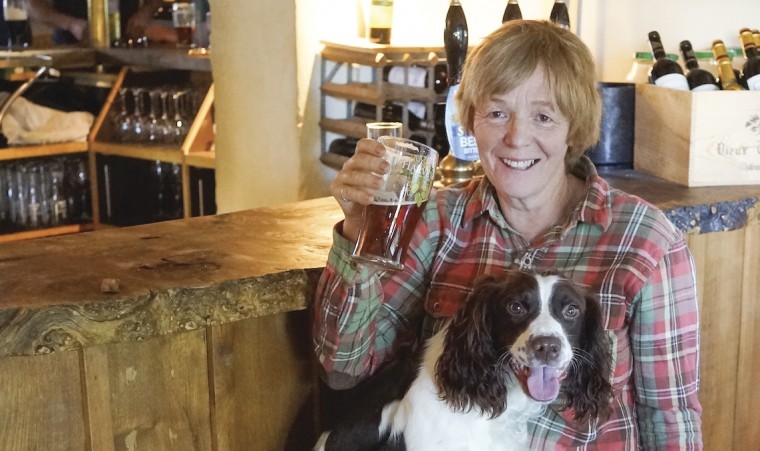Sir David Attenborough has increased people’s scientific understanding of the natural world while drawing attention to its beauty and fragility. He suggests that “specialists” in geography, geology, sociology and politics should talk to each other in order to tackle the problems affecting the natural world, working together to come up with solutions. In Cambridge they’ve named a building in his honour. This centre aims to create a place for collaboration between the many conservation organisations, academics, practitioners and university students. It also houses the museum of zoology with a collection of four million specimens, many of them significant.
I totally recommend a visit here: it’s an awe inspiring experience. We were lucky to be given a sneak preview in February during our pre lambing farm escape. While we were there, our host had cabinets unlocked and a precious mysterious tray was handed over for me to hold. It was unwrapped to reveal the selection of birds known as Darwin’s finches. I was amazed to learn that these specimens so carefully preserved had been collected from the Galápagos Islands and bought back to England on HMS Beagle in 1836. Charles Darwin’s study of these was instrumental in the formation of the original theory of evolution and Darwin’s ideas on natural selection. I’m so glad I didn’t drop that tray!
I was also intrigued to discover that the impressive 21 metre skeleton of the fin whale that’s suspended by the museum entrance was found beached at Pevensey Bay. Apparently it would have weighed 80 tonnes when it was alive. These whales can reach speeds of 23 mph. Their gestation is 11 months, and they’re now an endangered species. Strange how despite living and working so close to Pevensey, I’d never heard of this whale before visiting Cambridge. Back in 1865 it was our county’s claim to fame as this whale attracted many visitors to Sussex.
The Pevensey levels are designated as a European site of special scientific interest and it’s generally a pleasure to check on our animals down there, unless they’ve gone for a swim. While being impressed by ecologists’ enthusiasm and knowledge of snails and bugs that co exist along side our animals grazing in this habitat, I find it fascinating that the tiniest of creatures seem to have the longest and most illustrious sounding Latin names. Personally I’d soon replace these with a few nick names! I’d better stick with farming.
Are vegans in denial about the existence of the food chain? It’s a fact of life in the natural world and always will be regardless of the actions of minority groups of extremists. Many of these people have been radicalised by propaganda and therefore don’t hold a balanced view. All the more reason why farmers should tell consumers about food production. Food gets a lot of media coverage, but production and processing methods don’t. Many farmers like us have the advantage of knowing exactly where our food comes from, because we’ve produced it ourselves.
I must say, I’m not tempted to try one of the meat alternatives that Sainsbury’s are trialling. The so called bleeding mushroom burger is being sold alongside normal burgers. They are manufactured by a Danish plant based food company and the burgers are made from almonds, tomatoes and porcini mushrooms. The inclusion of beetroot helps recreate the colour of raw, medium and rare as it cooks. What else goes into them? Flavourings, plant based powder and glue were mentioned in the podcast that I listened to discussing veganism.
On the farm, cover crops are in and we’ve been busy cutting grass for silage, bale wrapping and hay making. The lambs are making an impact on grass consumption along side the ewes. We’ve had some problems getting them to respect electric fencing. But on the whole they’re looking well. The lambs are soon due for their second immunisation, and possibly another worming. I’m intending to get a faecal egg count done.
Ed Gingell and team did a good job shearing. We usually apply repellant and shear later but last year I felt they struggled in the heat, so I was determined to go earlier this year. We applied Clik Extra to the lambs, but left the ewes untreated. Giving the lambs fly repellant cover has helped to deter fly strike among the ewes before shearing. We’ve had a few cases of mastitis among my triplet ewes. I suppose having three lambs bunting is a contributing factor. These ewes now need culling, and some of them are young. Next year I’ll be keener to remove one lamb. Good percentages come at a cost.
We’ve nearly finished calving. We had a close shave the other day when rain was forecast and the men were obsessed with tractor work. I questioned, has anyone checked the cows due to calve? For the hundreds of times when all’s well, it’s always when you push the boundaries and don’t quite get around to it that trouble hits. We found a cow with the calf dangling jammed on the hips, the cow was distressed and the calf was getting cold. But it was still alive, and with assistance was safely delivered and revived. Animals have a canny knack of keeping you on your toes.
Keeping pace with the younger generation has a similar affect: no time for napping. That said their energy when harnessed in the right direction is useful. Our industry should be doing more to encourage young farmers. I applaud one local estate that’s offered tenancy opportunities to young farming entrants and I wish them luck.
I’m going to need more than luck in our world cup family sweepstake as I drew Denmark, Saudi Arabia and Switzerland. I need a miracle!




